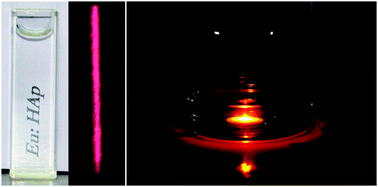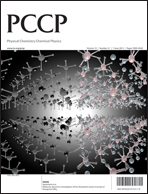The poor solubility, poor biocompatibility and disposal issues make fluorescent quantum dots such as CdSe, CdS, ZnS, InP, InAs, etc. impractical for imaging tissues or intercellular structures. As calcium phosphate is the main inorganic component of human bone and teeth, hydroxyapatite (Ca10(PO4)6(OH)2, HAp) is highly biocompatible and bioactive. Since HAp nanoparticles are not luminescent, a novel inorganic biocompatible fluorescent probe was suggested by doping HAp with lanthanides. Here we report the growth of chemically pure fluorescent HAp nanoparticles synthesized by a new methodology, liquid phase pulsed laser ablation using third harmonics (355 nm) of Nd-YAG laser. Europium doped HAp nanoparticles show emission with prominent peaks at 531 nm, 572 nm, 601 nm and 627 nm upon excitation at a wavelength of 325 nm. The red luminescence could also be observed under visible excitation at 459 nm and is suitable for living cell applications.
You have access to this article
 Please wait while we load your content...
Something went wrong. Try again?
Please wait while we load your content...
Something went wrong. Try again?


 Please wait while we load your content...
Please wait while we load your content...